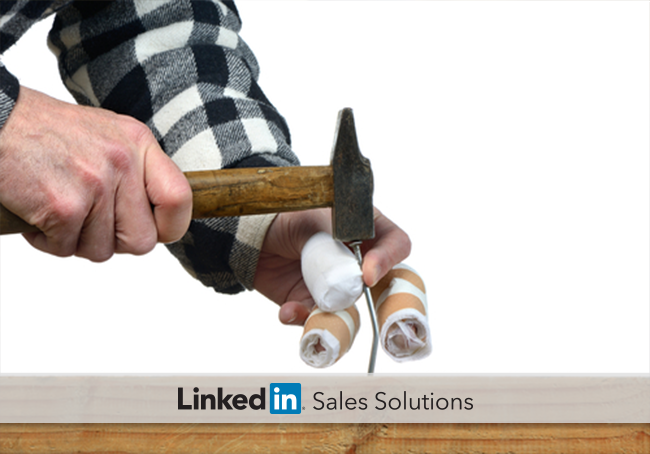How to Avoid 7 Common Social Selling Blunders on LinkedIn
LinkedIn provides sales pros with ample opportunities to connect with buyers. Not all sales professionals are as efficient as they could be in their social selling practices, however. In fact, many make mistakes in etiquette that can undermine their efforts and actually damage relationships with prospects, leads, and clients.
Here are seven common etiquette mistakes sales pros make on LinkedIn, along with tips for avoiding them:
-
Sending automatic, impersonal connection requests
Reps focused on new business who exceed quota make 148% more connection requests per month. But sending cold, canned connection requests sends the wrong message: I don’t value you enough to craft a personalized message to you.
Rather than making people feel as though they’re just another click on your network counter, demonstrate your interest in them as individuals. If you’re sending a connection request, you should know the individual in at least some context, so share why it makes sense to extend your relationship to LinkedIn and don’t be afraid to inject your personality into the message.
-
Asking everyone for recommendations
Recommendations can establish your credibility in a given industry. Securing recommendations, however, should be undertaken with full appreciation of the weight they carry.
This means not asking for recommendations from just anyone. Rather, seek recommendations from people you’ve worked closely with – those who can truly attest to your skills and strengths.
-
Drowning your network in status and profile updates
Overdoing updates can be annoying to your contacts. Sure, you want to stay top of mind among sales prospects, but inundating the feeds of those you’re trying to build relationships with is not likely to make them feel positively toward you.
Regular updates can be appropriate if you’re consistently providing useful information. For example, you might share an interesting whitepaper while adding your insightful comments, or a compelling interview with an expert in your field. The same goes for profile updates. If you’re revamping your profile, manage settings to prevent every little change from being broadcast.
-
Letting relationships drop into a black hole
The point of LinkedIn isn’t to amass a large number of connections that you ignore. The true value of your network is in the strength of the relationships you build with individual connections. It can feel good to connect with people, but what good are connections, really, if you never engage with them?
As is the case with real-world relationships, LinkedIn connections should be nurtured over time with regular engagement. And there are plenty of opportunities to stay in touch, and it can be as simple as commenting on a status update or clicking “like” on a work anniversary notification.
5. Turning every interaction into a sales pitch
Using every interaction with a connection to give a sales pitch comes across as unprofessional, irritating, and desperate. The uninformed sales pitch also gives the impression that you’re only interested in making the sale, and you are unwilling to learn how you can best provide value.
From the start, you should focus on meeting the specific needs of connections. Make efforts to learn more about their business and understand what they’re expecting from your relationship. Taking a prospect-centric approach builds trust because it shows that you’re serious about establishing a mutually beneficial partnership.
-
Taking without giving back
The unfortunate reality is some people have a negative perception of sales reps. Many think selling professionals are selfish and are only committed to closing deals, rather than being genuinely committed partners.
Social selling offers great opportunities to combat negative impressions of sales professionals. There are ample opportunities to provide buyers with information they can benefit from. And today, when sellers focus on becoming an accessible, trustworthy, and useful resource, there’s far less “selling” occurring.
-
Going negative
Buyers enjoy working with positive sales professionals. In general, people are more responsive to solutions-oriented messaging that is aspirational in nature than negative communication.
There may be legitimate reason to call attention to some disheartening aspect of an industry, but stressing the negative isn’t likely to yield sales. By contrast, providing constructive solutions can establish you as an ahead-of-the-curve partner dedicated to finding opportunity in challenges.
Interacting with your network should be about helping others achieve success. When you focus on the needs, concerns, and attitudes of those you’re trying to connect with, it will be clear to prospects, leads, and customers alike that you’re in business for them, not the other way around.
Topics: Modern selling
Related articles




